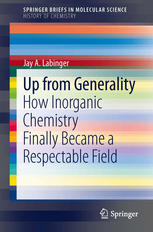

Most ebook files are in PDF format, so you can easily read them using various software such as Foxit Reader or directly on the Google Chrome browser.
Some ebook files are released by publishers in other formats such as .awz, .mobi, .epub, .fb2, etc. You may need to install specific software to read these formats on mobile/PC, such as Calibre.
Please read the tutorial at this link: https://ebookbell.com/faq
We offer FREE conversion to the popular formats you request; however, this may take some time. Therefore, right after payment, please email us, and we will try to provide the service as quickly as possible.
For some exceptional file formats or broken links (if any), please refrain from opening any disputes. Instead, email us first, and we will try to assist within a maximum of 6 hours.
EbookBell Team

0.0
0 reviewsIn this brief, renowned inorganic chemist Jay Labinger tracks the development of his field from a forgotten specialism to the establishment of an independent, intellectually viable discipline. Inorganic chemistry, with a negation in its very name, was long regarded as that which was left behind when organic and physical chemistry emerged as specialist fields in the 19th century. Only by the middle of the 20th century had it begun to gain its current stature of equality to that of the other main branches of chemistry. The author discusses the evidence for this transition, both quantitative and anecdotal and includes consideration of the roles of local and personal factors, with particular focus on Caltech as an illustrative example. This brief is of interest both to historians of science and inorganic chemists who would like to find out how their field began.